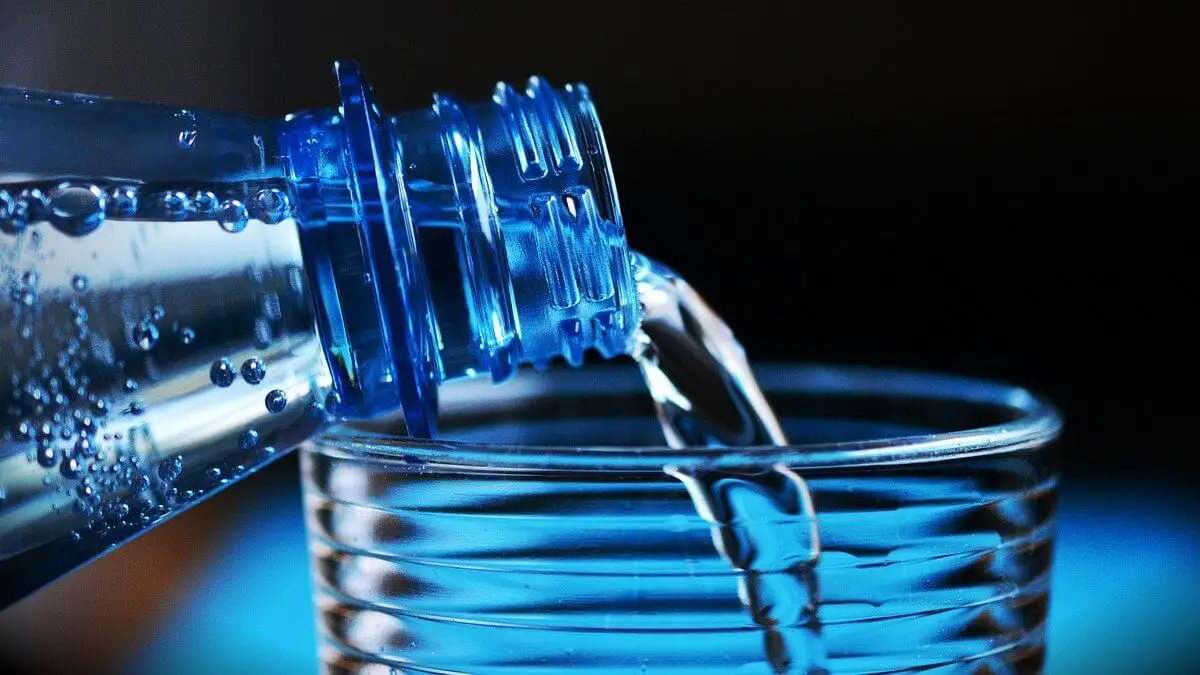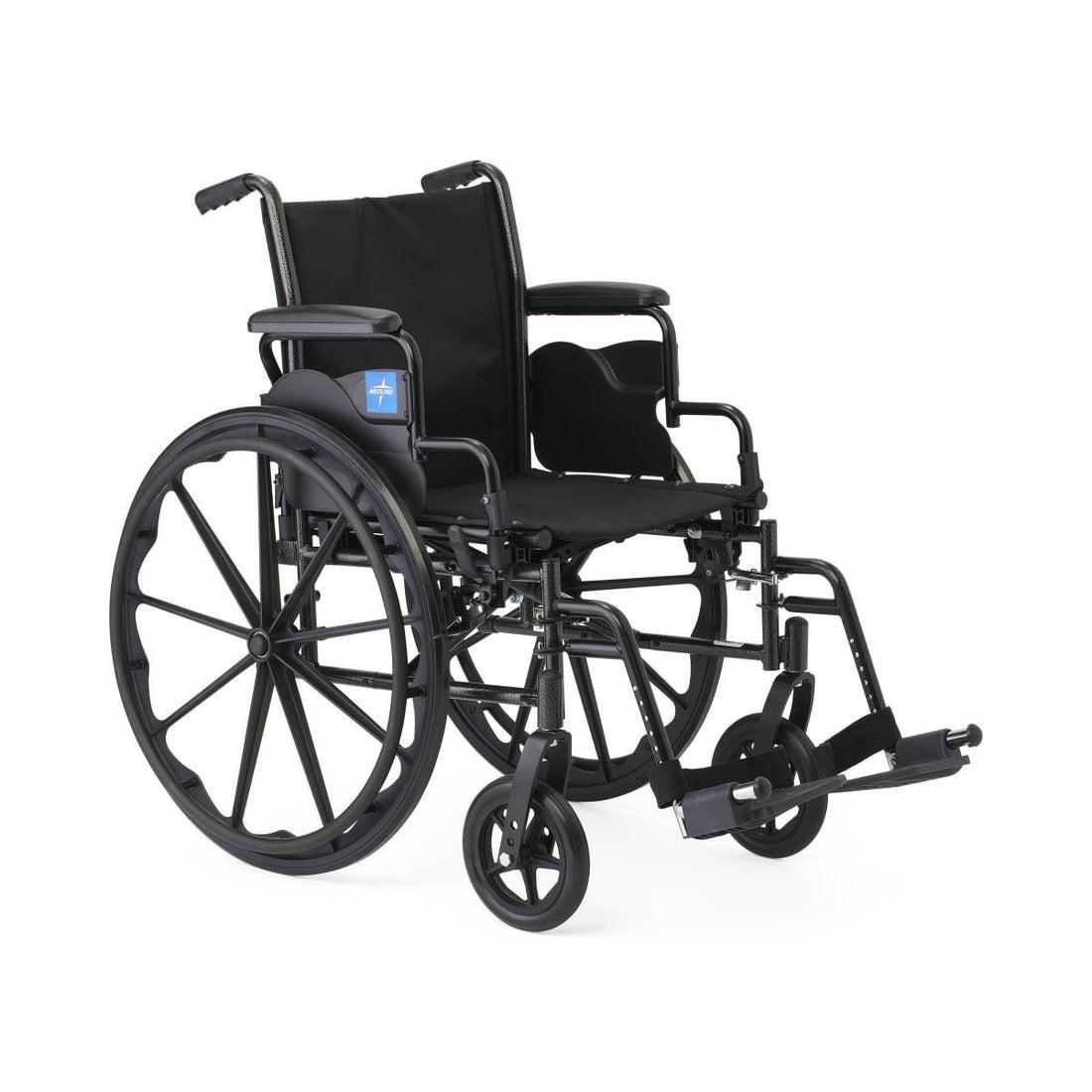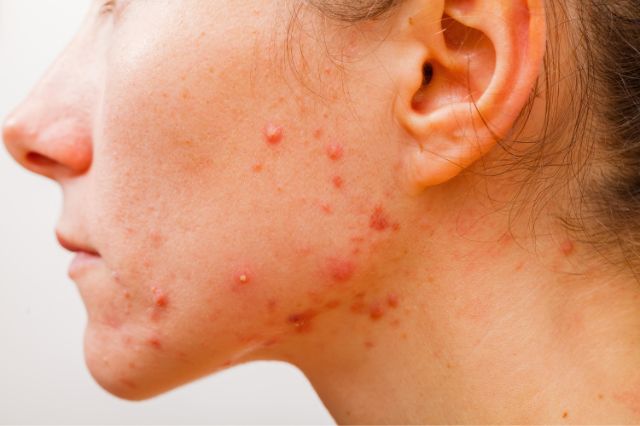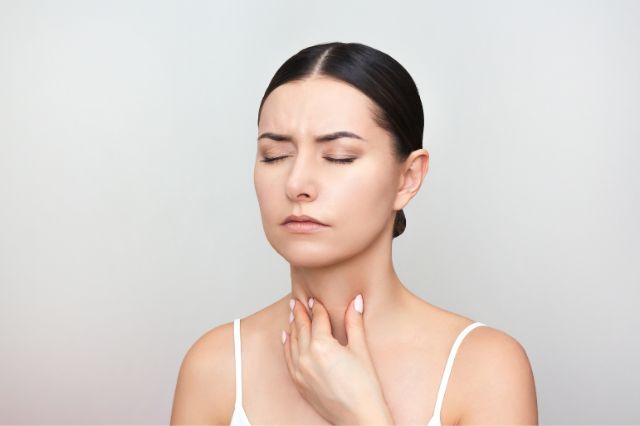Health
Sole Water: Everything You Should Know Before Drinking It

Do you want to get detoxification benefits of Himalayan salt and water?
Water keeps our body hydrated and releases toxins. For centuries people acclaimed to have numerous benefits of drinking water on an empty stomach.
These days many people are adopting the habit of drinking sole water because of its great health benefits.
Let’s dive in to discuss what the hype is all about.
What Is Sole Water?
This magical potion is a combination of completely saturated water with pink Himalayan salt. It is not about a small quantity of salt, but the water absorbs as much amount as it can.
Sole (pronounced as Solay) water is made only by using pink Himalayan salt. It is considered the purest form of salt and is known for its healing qualities. It releases unique energy in water to make it beneficial for overall wellbeing.
What Are the Health Benefits for Taking Sole Water?
Himalayan salt is famous because it is unprocessed and naturally rich in iodine. This natural electrolyte contains 84 trace minerals to benefit our health and provide energy to the body that boosts blood circulation.
These are the top 10 benefits sole water gives to your body.
1. Keeps you hydrated
Water plays a crucial role in regulating body temperature, keeping joints lubricated and preventing infections. Hydration also improves sleep, mood and understanding.
Drinking sole water provides vital minerals to keep energy levels high and assists in rehydration.
2. Good source of vitamins and minerals
We all know the importance of vitamins and minerals for our bodies. They are the building blocks and play a significant role in repairing tissues, strengthening bones and healing wounds.
Sole water makes the retention of 84 trace minerals of Himalayan salt easy for the body and boosts the immune system.
3. Natural detoxification
Being natural anti-bacterial in nature, sole water helps in detoxification. It removes all harmful bacteria from the body. It aids in balancing the body’s PH levels.
It relieves constipation, regulates bowel moments and detoxifies the colon. It cleanses the body from inside out.
4. Better sleep and clearer skin
It calms your nervous system and helps you relax by controlling stress hormones to promote good sleep. It puts your body at ease and allows rest.
Sole water keeps skin supple and fights many skin issues. For example, zinc repairs tissues and avoids acne. Iodine and chromium support the immune system. Sulfur cleanses skin surface and keeps it smooth.
5. Improves digestion
Since childhood, we have heard that drinking water improves digestion. It helps the digestive system more than any other remedy.
It activates salivary glands and stimulates hydrochloric acid and other enzymes to offer assistance in the metabolism of proteins. It works as an efficient assistant of the intestinal tract and liver to carry out digestive functions.
6. Balances blood sugar
You will notice a significant improvement in your blood sugar levels with regular consumption of sole. It fights diabetes. Four out of 84 minerals play a crucial part in the maintenance of blood sugar levels.
Chromium plays a key factor in the production and regulation of insulin.
Manganese controls glucose levels in the blood. It is also used in the treatment of diabetes and hypoglycemia.
Magnesium balances blood sugar levels and aids in digesting starches, fats and sugar.
Vanadium normalizes blood sugar levels in type 1 and types 2 diabetes.
7. Relieves muscles cramps
We have all experienced muscle cramps while playing, running, or simply walking. Generally, we attribute these cramps to lack of magnesium and other body fluids like calcium or potassium and include bananas and health supplements in our diet to ease cramping.
Drinking sole can help with muscular pain and contractions. It energizes our body and prevents cramps.
8. Strengthening vascular health
The cardiovascular system is considered the backbone of our bodies. That’s why its health is of prime importance.
Ordinary table salt is chemically bleached and acts as a toxin for our health. Unlike table salt, Himalayan salt proves beneficial in avoiding high blood pressure and also advances the healthy and strong cardiovascular system to ensure good health.
9. Dental hygiene
Tartar, bad breath and cavities are challenging even today with the latest dentistry practices. However, sole water can do wonders to maintain your dental hygiene.
It strengthens and whitens teeth, prevents gingivitis and makes your breath smell fresh.
10. Menstrual problems
For many females, menstrual complaints are the hardest afflictions faced regularly. However, Himalayan salt can play the role of their ayurvedic doctor to heal menstrual disorders and stomach aches.
It eases the muscles and brings them back to their normal cycle by stabilizing body fluids.
These are only a few benefits of sole water. It also helps treat ear infections, feet fungus, sore throats, headache, respiratory illness, motion sickness and digestive disorders.
How to Make Sole Water?
I can sense that after knowing all the benefits of sole water you want to make this your morning ritual to aid your body’s natural detoxification.
This two-ingredient natural beverage is the secret to deal with adrenal tiredness and hormonal imbalance. This natural antihistamine also reduces allergic effects.
The recipe for this energy booster is quite simple and quick.
You only need:
- Plastic lid glass mason jar
- Filtered water
- Himalayan salt
With these 5 simple steps, you can prepare your sole.
- Fill about 1/4 of the glass jar with salt
- Fill the rest of the jar with water
- Slightly shake the jar to mix salt with water
- Let it sit overnight
- Next morning, add more salt to the water and keep repeating the process until you find some undissolved salt at the bottom of the jar
Your nourishing drink is ready to give you numerous health magic.
If you want to try it, just pour 1 teaspoon of sole water into one cup of water, and drink it.
Be mindful of cutting out salty foods from your life to maintain a healthy and happy body.
Subscribe to Laura’s Natural Life on youtubeand watch this. She is there to help you with the benefits and recipes of sole water.
Can You Drink Himalayan Salt Water All Day?
You can reap a multitude of health benefits with one glass of sole water daily. It is not recommended to drink it all day. Excess of sodium intake can be harmful, and you may suffer kidney stones, high blood pressure and other chronic diseases.
If you are not on a sodium-restricted diet, make it a part of your morning routine to see how beneficial it is for your health. It promotes good hair, skin and nails.
Frequently Asked Questions about Pink Salt Water
Here are the comprehensive answers to your frequently asked questions.
1. Is the sole water good for me?
It is beneficial for you if you are not facing any blood pressure issues. It maintains the body’s electrolyte balance. The excess of routine salt can put you on the risk of hypertension, kidney issues and so on, but because of its diverse elements pink Himalayan salt is good for improving circulation and balancing minerals in cells.
2. Is it OK to drink sole water every day?
Adding a glass of sole to your a.m routine is not a bad idea if you often deal with low blood pressure. But consult your physician to avoid any problems.
It will make you more mindful of your general health care. You will enjoy the vibrant energy. For improved sleep patterns, drink more sole water and less fizzy drinks. You will experience the rare combination of relaxation and contentment with better sleep.
3. When should I drink?
If you want to obtain the optimum result of drinking pink saltwater, drink it in the morning on an empty stomach. It aids in cleansing your body and regulating bowel movement.
It helps to get rid of waste from the body. It betters the body’s alkalinity and makes skin glow.
The soaked salt is known for releasing unique energy to charge your body with vitality.
4. Can I drink sole water at night?
It is better to consume this saltwater in the morning. It is more of a sports beverage than a health drink.
If you want to achieve its desired result, drinking it in the morning is the best option.
5. Is pink Himalayan salt better than sea salt?
Just like table salt, sea salt contains more sodium, whereas pink Himalayan salt contains more iron, magnesium, sodium and potassium. It carries many minerals that our table salt and the coarse sea salt lack.
With its several health claims, pink Himalayan salt is better than sea salt.
Bottom Line
Sole is the most effortless and fastest way to make your body cells hydrated and energized.
When and how much sole water should be consumed depends on your personal needs and requirements. We all must be well aware of our health and its related problems.
If something suits many, it does not mean that it will have the same effect on you. Do your research before adopting any habit.
Don’t be a blind follower. Consult your physician before you make any changes in your self-care routine or diet.
Health
Wheelchairs: Types, Functions, Advantages, and Recommendations for Choosing


Wheelchairs are an essential means of transportation for people with disabilities, helping them maintain mobility, independence, and improve their quality of life. They provide comfort and convenience in everyday life, allowing users to be active and independent.
Let’s explore the different types, functions, and advantages of wheelchairs, and provide recommendations on how to choose the right one.
Types of Wheelchairs
There are several types of wheelchairs, each with its own characteristics and purpose:
1. Mechanical.
Mechanical or manual wheelchairs are propelled by the user or an assistant. They are simple in design, lightweight and affordable.
Advantages:
- Light weight.
- Easy to use and maintain.
- Relatively low cost.
- Do not require power supply.
Disadvantages:
- Require physical effort to move.
- Limited speed and range of movement.
- Not suitable for people with limited hand strength.
2. Electric.
Equipped with a motor and controlled by a joystick or remote control. They are suitable for people with disabilities who cannot move the wheelchair on their own.
Advantages:
- Easy to operate.
- Ability to travel long distances.
- High level of comfort and support.
- Suitable for users with reduced mobility.
Disadvantages:
- High cost.
- The need for regular battery charging.
- Large weight and dimensions.
3. Sports.
Sports wheelchairs are designed for active users who play sports or lead an active lifestyle. They have a lightweight and durable design, with special wheels and accessories to improve maneuverability and speed.
Advantages:
- Lightness and maneuverability.
- Strength and durability.
- Suitable for an active lifestyle.
Disadvantages:
- High cost.
- Not always suitable for everyday use.
4. Children’s.
Children’s wheelchairs are specially designed for young users with disabilities. They take into account children’s physiological characteristics and provide a high level of comfort and safety.
Advantages:
- Adaptation to the needs of children.
- Adjustable components for child growth.
- High level of comfort and safety.
Disadvantages:
- Limited period of use due to the child’s growth.
- High cost of specialized models.
5. Wheelchairs for an active lifestyle.
Designed for users who lead an active lifestyle despite physical limitations, including work, travel, and sports. They combine lightness, maneuverability, and comfort.
Advantages:
- High maneuverability and lightness.
- Suitable for an active lifestyle.
- Convenient for traveling.
Disadvantages:
- May be less comfortable for prolonged use.
- High cost.
You can find a wide range of wheelchairs from world-famous brands: https://medsupplycart.com/
Functions of Wheelchairs
They perform several important functions that help users maintain independence and improve their quality of life:
- Mobility. Their main function is to ensure the mobility of the user, allowing them to move around at home, at work, and on the street.
- Support. They provide the necessary support for people with disabilities, helping them maintain proper posture and avoid injury.
- Comfort. They provide comfort through ergonomic design, adjustable seats and backrests, and additional accessories such as armrests and footrests.
- Independence. Wheelchairs help users maintain their independence, allowing them to perform daily tasks and engage in social activities independently.
Advantages of Wheelchairs
Wheelchairs have several advantages that make them indispensable for people with disabilities:
- Improved quality of life. They help users lead an active lifestyle, participate in social activities, and maintain independence.
- Reducing physical activity. They reduce the physical load on a person with disabilities, allowing them to move around effortlessly.
- Improved safety. Ensure user safety by helping to avoid falls and injuries.
- Comfort and support. Provide comfort and support, helping to maintain proper posture and avoid pain and discomfort.
Recommendations for Choosing a Wheelchair.
- Identification of needs. Before choosing a wheelchair, it is important to identify your needs and requirements. Consider your lifestyle, activity level, physical abilities, and medical needs.
- Consultation with a specialist. Consult your doctor or rehabilitation specialist. They can help you determine which type of wheelchair is best for your needs.
- Read reviews and ratings. Read reviews and ratings of different models. This will help you find a reliable and comfortable wheelchair that meets your needs.
- Test the wheelchair. Be sure to try it out before you buy. Make sure it is comfortable, easy to operate, and meets your needs.
- Warranty and service. Check the warranty terms and availability of service centers in your area. This will ensure timely repairs and maintenance.
Wheelchairs are an important means of transportation for people with disabilities. They help maintain mobility, independence, and improve quality of life. Choosing the right wheelchair depends on the needs and requirements of the user, as well as the conditions in which it will be used. Consultation with a specialist, reading reviews and testing will help you make the right choice and ensure maximum comfort and support.
Beauty
How to Test for Acne


Acne is the most common skin issue in the United States, affecting an estimated 50 million people. Although most prevalent in teenagers and adolescents, adult acne is a problem affecting men and women throughout their adult lives.
So, how do you know if you suffer from acne, and how do you find out what is causing it? Let’s take a closer look.
What is acne?
Acne is a skin condition that predominantly leads to spots and oily skin. It most typically occurs on the face, back, and chest. Acne is often linked to a change in hormone levels during puberty but can start at any age.
Some people only experience mild symptoms of acne that do not require treatment, whereas others struggle with more severe issues.
What are the main symptoms of acne?
Although everyone’s skin is different, some of the most common symptoms of acne are:
- Crusting of skin bumps
- Cysts
- Papules (small, red bumps)
- Pustules (small, red bumps that contain white or yellow pus)
- Redness around skin eruptions
- Scarring of the skin
- Whiteheads
- Blackheads
The symptoms of acne most commonly occur on the face, although they can also manifest themselves on the shoulders, back, arms, chest, and buttocks.
How is acne diagnosed?
If you suspect that you may have acne, you can make an appointment with your doctor, who will be able to give you an official diagnosis. In most cases, they can do this simply by examining the skin without the need for any testing.
Alternatively, you could book an appointment with a dermatologist, although this is unlikely to be covered by your health insurance.
What tests are available for acne?
If you struggle with chronic acne and would like to find out more about what is causing your skin to break out, you might want to consider requesting a blood test for acne.
Although this can be carried out by your doctor, it would be better to work with dermatologists and skin experts who can administer an in-depth test to see what is going on underneath the surface of your skin.
There are lots of different biomarkers that can be checked to see what is causing the acne on your skin, such as:
- Blood glucose
- Kidney function
- Electrolytes
- Inflammation
- Vitamins and minerals
- Liver function
- Thyroid
- Hormones including testosterone, estrogen and progesterone
- Gallbladder function
It is highly unlikely that your doctor will check all these elements of your health when doing a blood test as it is expensive to do. However, this can leave you with even more unanswered questions. However, when you undergo full testing, you can find the root cause of your acne and make any necessary changes to your lifestyle, diet, and skincare routine.
You can order acne health skin care home test kits that are delivered directly to your doorstep, which require you to take a sample and post it back to the lab. Alternatively, if you do not feel comfortable doing this, you can make an appointment with a private clinic.
What triggers acne outbreaks?
There are lots of things that can trigger an acne breakout, including:
- Hormonal changes such as puberty, menstrual periods, pregnancy, birth control pills, and menopause.
- Certain medications, such as steroids and testosterone.
- Birth control devices such as drug-containing IUDs.
- Excessive touching of the skin.
Although many people believe that a poor diet can contribute to spots, there is little evidence to suggest that eating sugary foods such as chocolate and candy causes spots.
What are the best treatments for acne?
Depending on the severity of your symptoms, there are several treatment options available. For mild cases, it can be a good idea to start with a good skincare regime that includes cleansing, moisturizing and gentle exfoliation.
For more stubborn spots and blemishes, over-the-counter treatments that contain salicylic acid or benzoyl peroxide can be effective. However, these can cause redness, drying, or excessive peeling of the skin in some people.
Lastly, for those who have severe symptoms of acne, there are several treatments that your doctor may be willing to prescribe, such as oral and topical antibiotics and prescription formula sulfur, resorcinol or salicylic acid.
Final thoughts
Acne, both in adolescence and adulthood, can have a seriously detrimental effect on your self-esteem. Fortunately, you do not need to suffer in silence as there are tests and treatments available, with options for all ages and skin types.
Health
When to Know Your Sore Throat Needs Urgent Attention


Sore throats are incredibly common, especially in children, and, in most cases, are nothing to be concerned about. However, sometimes they are a sign of something more serious.
If you have a persistent sore throat or your child keeps complaining of having a sore throat and you are starting to worry, it can be a good idea to know when a sore throat requires urgent attention.
What are the most common causes of a sore throat?
Most colds are caused by a virus, such as the common cold or seasonal flu. However, there are other potential causes, including:
- Allergies
- Bacteria
- Dry air
- Exposure to pollutants, excessive dust or chemicals
- Smoking or exposure to second-hand smoke
Could my sore throat be a sign of throat cancer?
In rare cases, a sore throat can be a sign of cancer in the throat, which affects around 1% of the adult population. There are several different types of throat cancer, including nasopharyngeal cancer, glottic cancer, and oropharyngeal cancer.
As mentioned above, it is very unlikely that your sore throat is a symptom of having throat cancer, although it is important to know that it could be. Some of the most common signs and symptoms of throat cancer include:
- A cough
- Changes in your voice, such as hoarseness or an inability to speak properly
- Difficulty swallowing
- Ear pain
- A lump or sore that does not heal
- Weight loss
It is also worth knowing the factors that increase your risk of throat cancer, such as being a smoker or chewing tobacco, excessive alcohol consumption, viral infections such as HPV, and exposure to toxic substances.
Do I have strep throat?
Strep throat is a bacterial infection that makes your throat feel sore and scratchy. This infection only accounts for a small percentage of sore throats, however, if left untreated, it can cause issues including inflammation of the kidneys and rheumatic fever.
Strep throat is most common in children, although it can occur in adults as well. If you suspect that you or your child has strep throat, make an appointment with your doctor as soon as possible.
Some of the most common signs of strep throat include:
- A sore throat
- Chills
- A headache
- Loss of appetite
- Abdominal pain
- Nausea and/or vomiting
It is worth knowing that strep throat does not normally cause a cough, so if you have this symptom, you are more likely to have a viral infection.
Is a sore throat a symptom of COVID?
While a sore throat can be a symptom of COVID, it is not as common as a fever and a dry cough. However, if your sore throat is a result of COVID-19, it might feel:
- Dry
- Painful when you swallow
- Scratchy or itchy
If your sore throat is accompanied by a fever, headache, and a dry cough, you may want to take a test to rule out COVID.
What symptoms indicate that a sore throat requires medical attention?
A viral sore throat should start to show signs of improvement within five days. If you or your child has had a sore throat for longer than this time and are not responding to over-the-counter treatments, it can be a good idea to book an appointment with your doctor.
However, if your sore throat has persisted for a long time, seems too severe or you have other worrying symptoms, it may require urgent medical attention. Concerning symptoms that require immediate investigation include:
- Blood in your saliva or phlegm
- Dehydration
- Difficulty breathing or swallowing
- Excessive drooling, especially in young children
- Joint pain or swelling of the joints
- A high fever (over 101 Fahrenheit)
- Chills and body aches
- A rash or hives on your body
- Earache
- Hoarseness that lasts more than two weeks
- Unexplained weight loss
Final thoughts
When it comes to any persistent or worsening symptoms, including a sore throat, it is always better to be safe than sorry and seek medical advice. If your sore throat is accompanied by any other worrying symptoms as detailed above, you should seek medical attention as quickly as possible.
In most cases, your sore throat will go away on its own with time and rest or you may require antibiotics if you have a bacterial infection.
-



 Captions3 years ago
Captions3 years ago341 Sexy Captions to Fire Up Your Instagram Pictures
-



 Captions3 years ago
Captions3 years ago311 Night Out Captions for Instagram and Your Crazy Night
-



 Captions3 years ago
Captions3 years ago245 Saree Captions for Instagram to Boost Your Selfies in Saree
-



 Captions3 years ago
Captions3 years ago256 Best Ethnic Wear Captions for Instagram on Traditional Dress
-



 Captions3 years ago
Captions3 years ago230 Blurred Picture Captions for Instagram
-



 Captions3 years ago
Captions3 years ago275 Deep Captions for Instagram to Express Your Thoughts
-



 Quotes3 years ago
Quotes3 years ago222 Nail Captions for Instagram to Showcase Your Fresh Manicure
-



 Captions3 years ago
Captions3 years ago211 Laughing Captions for Instagram | Laughter Is the Best Medicine







